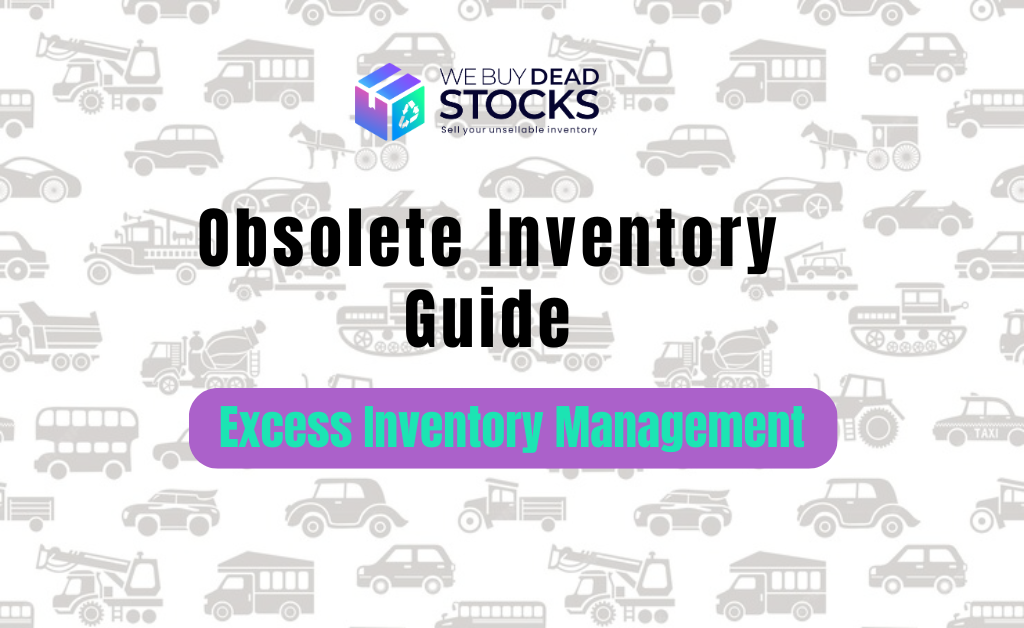Effective inventory management is crucial for business success. But what happens when perfectly good products become obsolete? This guide dives deep into the world of obsolete inventory, exploring how to identify it, develop strategies to reduce it, and implement practices to prevent it from happening again. Discover how to streamline your operations, maximise profits, and ensure your inventory remains relevant and valuable.Learn how to optimise your inventory management and unlock the full potential of your business.
The Hidden Cost of Outdated Stock: What is Obsolete Inventory?
Ever looked in your pantry and found that box of cereal pushed to the back, hopelessly out of date? That’s the definition of obsolete inventory. Businesses face the same issue, but with potentially bigger consequences. Obsolete inventory, also known as excess and obsolete inventory, refers to stock that can’t be sold due to various reasons. This could be outdated technology, discontinued products, or items damaged in storage.
Holding onto obsolete inventory hurts your business in a few ways. Storage space gets clogged, preventing you from stocking more profitable items. Obsolete inventory also ties up cash that could be used for better things, like investing in new products or marketing campaigns.
Spotting the Signs: How to Analyse Obsolete Inventory
Before you can tackle obsolete inventory, you need to identify the enemy by actually learning the definition of obsolete inventory. Regular inventory audits are your first line of defence. This means physically counting your stock and comparing it to what your records say you have. Think of it like taking inventory in a game – but with real-world consequences!
The first step to tackling obsolete inventory is figuring out how much you have. Regular inventory audits are key. This includes physically tallying your inventory and contrasting it with your documentation.
Excess inventory management software can also be a big help. If you also search for how to get rid of excess inventory, these programs track your stock levels in real-time, making it easier to identify slow-moving items that are at risk of becoming obsolete. Wanna know what to avoid?
- Slow-selling products: Are certain items sitting on the shelves for months on end? These are prime candidates for becoming obsolete.
- Expiry Dates Don’t Lie: Set up automated alerts for expiring items, not just food products, but also medications, cosmetics, and anything with a limited shelf life.
- Discontinued Product Watchlist: Integrate your software with supplier feeds to get notified when a product gets discontinued. This gives you a heads-up to adjust your ordering strategy and avoid inventory obsolescence.
- Damaged Goods Get Flagged: Record damaged items during the audit and log them in the software. This ensures they don’t get mistakenly included in future sales or shipments. You could also recycle electronics for money.
Strategies to Reduce Obsolete Inventory
Imagine your warehouse as a bustling marketplace, overflowing with products customers love. But lurking in the corners are forgotten items –– past-season clothes, outdated technology, or products with minor damage. These are the culprits behind obsolete inventory, silently draining your profits and eating up valuable space. Excess inventory management is important for this purpose.
The good news? You can transform your warehouse into a haven of efficiency. By implementing smart strategies, you can significantly reduce obsolete inventory and unlock the full potential of your storage space. Here’s your action plan:
Discounts and Deals
Fire up the sale signs! Offering discounts or running clearance sales is a powerful tool to move slow-moving items. Lower prices can spark customer interest and clear out those lingering products.
Bundle Up for Success
Don’t let those older items languish alone! Bundle them with popular products to create a more attractive offer for your customers. This win-win strategy breathes new life into forgotten items while enticing customers with a bundled deal that feels like a steal.
Liquidation
A Fresh Start: For some inventory obsolescence, liquidation might be the answer. Liquidators specialise in buying large quantities of discounted goods. While you might not earn top dollar, it frees up valuable storage space and recovers a portion of your initial investment. Think of it as a chance to recoup some losses and make space for fresh inventory.
The Power of Giving
Depending on the condition of your obsolete inventory, consider donating it to charity. This not only benefits a good cause but can also offer you a tax write-off, reducing your tax burden and putting those unwanted items to good use.
Recycle and Repurpose
For electronics or other items with recyclable materials, explore responsible recycling options. This eco-friendly approach helps the environment and, depending on the materials, might even earn you some extra cash! If you recycle electronics for money, you contribute to a sustainable future and potentially gain a financial reward.
Prevention is Key: How to Avoid Obsolete Inventory
The best way to deal with excess and obsolete inventory is to avoid it altogether. Here are some proactive strategies:
- Accurate forecasting: Use historical sales data and market trends to predict future demand for your products. This helps you order the right amount of stock and avoid overstocking.
- Lean manufacturing: This approach focuses on minimising waste and optimising production processes. By producing only what you need, you reduce the risk of ending up with excess inventory.
- Strong supplier relationships: Work closely with your suppliers to ensure you get the right products at the right time. This can help you avoid ordering too much or too little stock.
- Regular inventory reviews: Schedule regular reviews of your inventory levels to identify any potential problems early on.
By following excess inventory management, you can keep obsolete inventory under control and ensure your business is running smoothly. Remember, a little planning and proactive management can go a long way in saving you money and boosting your bottom line.
Conclusion
To sum up, successful excess inventory management is essential to the success of any organisation. However, dealing with obsolete inventory requires a proactive approach. By analysing, reducing, and avoiding obsolete inventory, businesses can streamline operations, maximise profits, and stay competitive in today’s market.
The hidden costs of outdated stock can significantly impact businesses, tying up valuable resources and hindering growth. Identifying obsolete inventory through regular audits and using inventory management software are essential steps in tackling this challenge.
Strategies such as offering discounts, bundling products, liquidation, donations, and responsible recycling can help reduce obsolete inventory and free up valuable space and resources. Moreover, implementing proactive measures like accurate forecasting, lean manufacturing, strong supplier relationships, and regular inventory reviews can prevent the accumulation of obsolete inventory in the future.
By optimising inventory management practices and staying vigilant, businesses can unlock their full potential and thrive in a dynamic market environment. Remember, proactive management and strategic planning are key to effectively managing obsolete inventory and ensuring long-term success.





